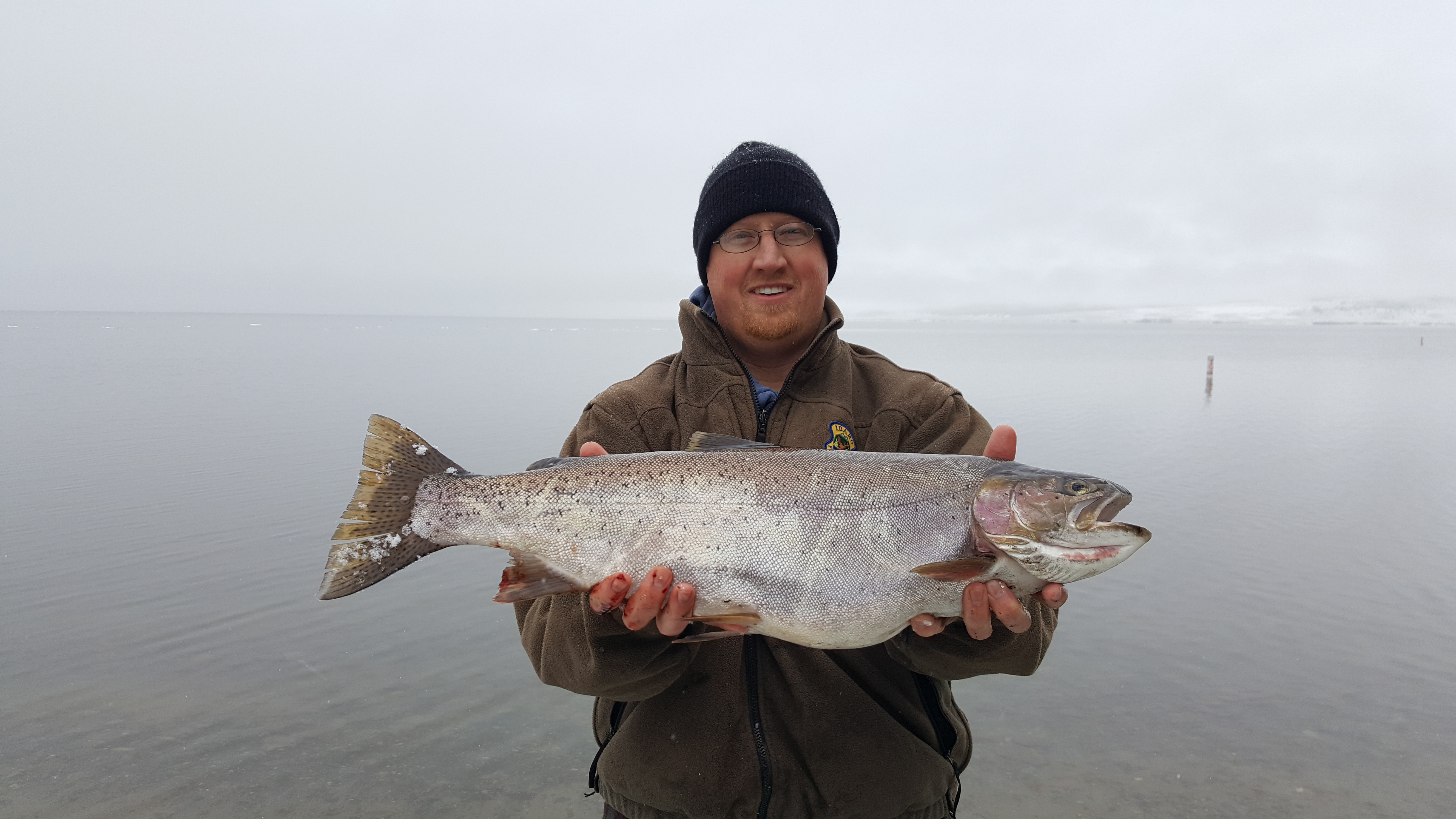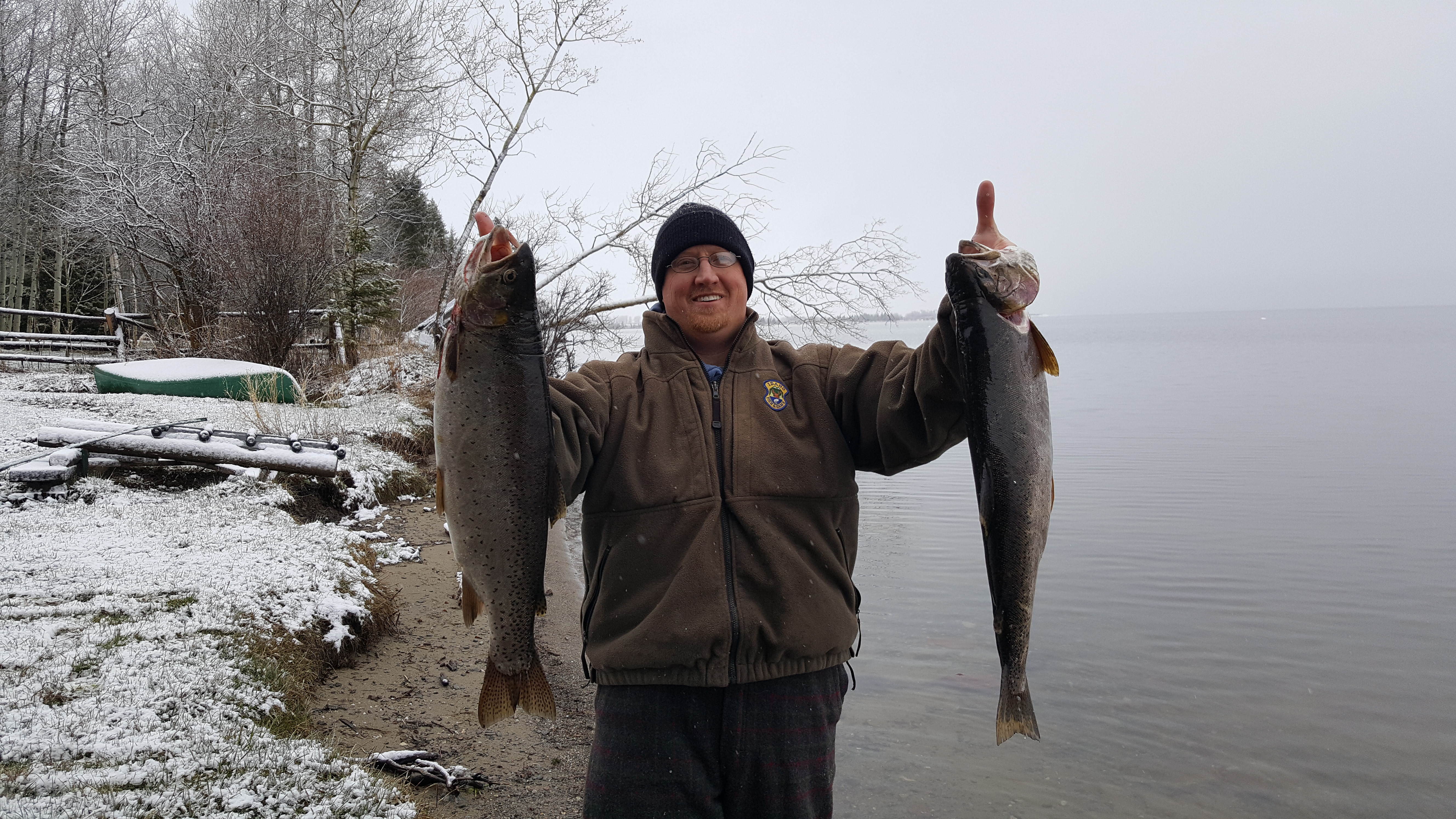
The 2017 gillnetting process has been completed. The IDFG crew netted 9 nights and set a total of 50 nets for the survey. The crew and volunteers spent approximately 200 man hours collecting data. This large scale survey provides a comprehensive look at the fish population at Henrys Lake.
The trout numbers decreased for the third consecutive year and averaged 5.5 trout per net. This is below our goal of 11 trout per net. Hybrid numbers held fairly stable and are similar to the last couple of years. Brook Trout numbers decreased and are at the lowest level in several years. This is directly related to stocking numbers below objective for 3 consecutive years, mainly due to marginal egg quality during that period. The good news is that 200,000 Brook Trout are available for stocking this fall. Those will double the normal goal of 100,000. As fall spawners, Brook Trout are larger in size at stocking and should recruit to the fishery quickly. Expect a down year for these fish, but some exceptionally large fish. Brook trout numbers should start improving in 2018. As with Brook Trout, Yellowstone Cutthroat numbers are substantially below objective.
Age class strength is still being evaluated. This evaluation won’t be completed until we’ve aged the fish in a lab setting which will be completed in late fall or early winter. Looking at size structure only, there appear to be good numbers of younger Cutthroat and hybrids. Cutthroat stocking numbers have been bumped up the last couple of years and those fish will start to show up in the fishery this year. The fish stocked last fall (1 year old fish) normally don’t show up in the nets due to their small size. However, last fall’s stocking of Cutthroat was the largest in 5 years and should provide a boost. Egg quality of both Cutthroat and hybrids was good this spring and should translate to good numbers stocked this fall. Wild trout production should be improved this year as well with better water conditions.
Utah Chub numbers were down again this year. The median number was 1.5 per net. What that means is that out of the 50 nets, 25 had either 1 or 0 Chubs caught. That median number is the lowest since 2008 and the second lowest since we began our 50 net survey program in 2004.
At this stage environmental factors including: snowpack, tributary inflow and lake level are improved. This normally translates to improved catch rates. Although overall fish numbers are certainly the largest factor in catch rates, environmental factors play a significant role as well. We saw some many large hybrids and Cutthroat last year and we would expect to see large fish again this year. As with last season and a down year, anglers experienced some periods of good fishing with exceptional fish. In reality we’ll get our best preview on opening weekend.


